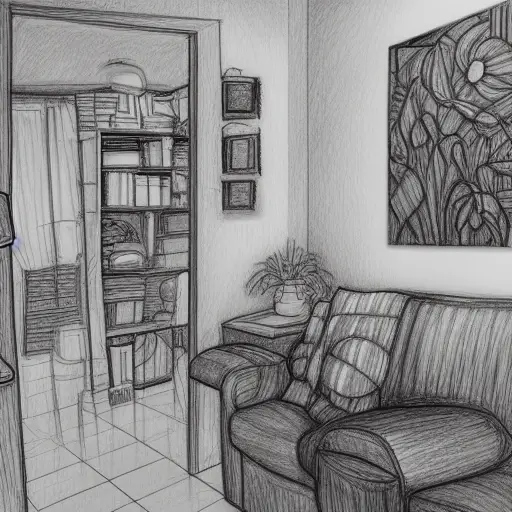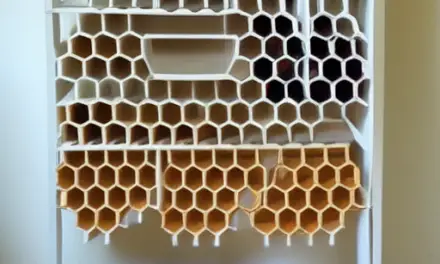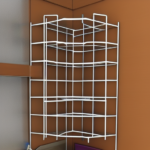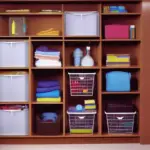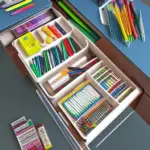Purging your home may seem overwhelming at first, but following a few simple tips can make the process less stressful and much easier. Start by sorting items into appropriate bins. Once you’ve sorted everything, you can dispose of the items that you don’t need or want in different ways.
Getting started
The first step to starting your purge is to identify which items in your home you don’t use. Start with the easiest items, like books you’ve never read or clothes you never wear. It can be helpful to take pictures of these items. Once you know what you don’t need, it’s time to get rid of it.
You can place portable storage containers in your driveway. You can also place the items in a secure storage facility. Or, you can give them to a friend. Having someone else pick up the items can save you time and money. You’ll be able to move items from one room to the next faster.
If you’re not sure where to start, you can use a one-item-a-day method to organize your home. If you can declutter one item a day, you’ll be able to eliminate 365 items a year. Another option is to keep a collection box by your front door. As you go in and out of your home, drop off unwanted items in this box. Afterward, you can donate, recycle, or give them away.
The first step to removing clutter is to identify what causes it. You’ll also want to identify the things that can make it more difficult to declutter your home in the future. Getting rid of them now can save you a lot of stress in the future. It can also save you from headaches in the future. But it can be daunting, especially if you don’t know where to begin.
The hardest part of decluttering your home is actually starting. But even though it’s difficult, taking one small step at a time can help transform your home. Using a guide like 5 Areas to Declutter in 10 Minutes will help you get started with this task. Before you get to the more difficult areas of the house, it’s best to come up with a plan for your unwanted items.
Planning
If you have been wanting to start purging your home, the first step is to plan ahead. Write down the things you want to get rid of, how much space they take up, and what you use them for. You can also take pictures of the things to help you remember which ones you want to get rid of. Then, start to sort through your items. Discard any that don’t spark joy or are just collecting dust.
Decluttering can be hard work, so plan your project. Choosing one area to start with can make a huge difference in the outcome. For example, you may want to start with rooms that are easiest to declutter, such as the bedroom and bathroom. This will help you build momentum and get rid of things you may be emotionally attached to.
Next, identify the trash in each room. This includes any opened packaging, boxes, broken, torn, or stained items. Empty toiletry bottles should also be discarded. After getting rid of the trash, you can proceed to the next stage of the purging process. Then, you can start taking the items you want to donate to a consignment shop. Remember to not bring the items back home.
Once you’ve finished decluttering, you’ll need to maintain a clutter-free home. Clutter is a distraction and prevents you from accomplishing your goals. You may also forget about certain items you already have and end up buying more of them. That can be a huge waste of money. A clutter-free home is an effective and relaxing space.
Organizing
If you’re planning to do a complete purge of your home, start with the simplest items first. Things like old magazines and clothes you rarely wear are easy to get rid of. Also, take a photo of items you no longer want or use. Getting rid of things you don’t use or love can help you make space for new items.
Once you’ve identified what you no longer need or want, sort through them. If they are not in a usable condition, give them away. Items that are too sentimental should be tossed. Organize items by type, if possible. Then, you can get rid of those sentimental items that you’ve kept in a box.
It’s important to remember that this is a continuous process, not a one-time exercise. You’ll want to continue to purge items as your life changes and your interests change. To make the process easier, keep an ongoing donation box nearby. As you find things that no longer serve your needs, donate them to charity.
Decluttering your home isn’t easy, but it doesn’t have to be difficult. There are free guides and resources that will help you get started. Whether you’re a complete newbie or a seasoned pro, starting a purge can feel overwhelming. To make your task less daunting, start by decluttering one easy area at a time.
Letting go of
Letting go of things when purging your house is not always easy. Sometimes, we’re so attached to something that we can’t bear to part with it. We’ll try to save an entire set of Jane Austen novels, a pair of too-small skinny jeans, or a prized acoustic guitar. But letting go of these items can feel like failure or giving up on a dream.
To help you get over this, consider thinking about why you’re holding onto certain things. Are they causing you stress or frustration? Are they things that you might want to keep for “rainy days”? These factors will help you identify which things you should part with. By following these tips, you can reduce the stress associated with the process of decluttering.
Letting go of things when purging your house is one of the most difficult parts of decluttering. We hang onto things for many reasons, including sentimental, future value, or financial value. Understanding why we hold onto things is the first step in decluttering your home. Once you understand why we hold onto things, letting them go is easier.
Decluttering in stages
Decluttering your home is a complex process, but you can break it down into smaller areas to tackle at a time. The key is to identify a plan and work it. Once you have a plan, tackling your home will be easier. You can begin by decluttering a small area of your home, such as your bathroom, closet, or kitchen.
The first step is to determine why you’re decluttering. Finding your reason for decluttering can make the process less overwhelming and remove the feelings of guilt that you may have. You’ll also be able to feel good about your progress as you tackle each stage. Remember that decluttering is a process, and it will get easier with practice.
The next step is to decide whether you’d like to tackle a room in a day or over a weekend. If you’re decluttering a small room, you might find it easier to do it over several weekends. Make sure to plan ahead and estimate how long it will take you to declutter each room. Leave yourself some buffer time between rooms so that you don’t get overwhelmed.
Decluttering your home is an immense task, so it’s important to do it in stages. You’ll need enough time to sort through everything and figure out how to organize it the best way. This way, you’ll get a sense of accomplishment and control over the project. Moreover, you’ll find more space in your home.

